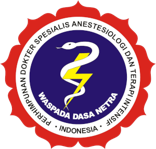Perioperative Management of Subdural Hemorrhage (SDH) Trepanation Decompression with Hemophilia A
Abstract
Hemophilia is a serious inherited blood disease, transmitted by women, that affects mainly men and lasts for a lifetime. Hemophilia A is the most common form. If any of the factors necessary for blood clotting are absent or insufficient, the clotting mechanism is disturbed, causing insatiable bleeding. The most common cause of death in hemophilia patients is cerebral hemorrhage due to head trauma. In cases of intracranial hemorrhage, surgery should be performed immediately to obtain a better prognosis. A 17-year-old man diagnosed with a 2x4 loss of consciousness due to intracranial subdural hemorrhage (SDH) in the left frontotemporoparietal region and cerebral edema on day 4 accompanied by subfalcine herniation to the right with hemophilia A, planned trepanation decompression for SDH evacuation. The patient received 4000 units of factor VIII injection before surgery. Bleeding during surgery was 1100cc and he received a transfusion of 1940cc blood products until hemodynamically stable. In the postoperative phase, he was admitted to the ICU for 8 days, extubation was performed after the condition improved. In patient with hemophilia, evacuation of bleeding should be performed immediately, but there is a high risk of rebleeding. A recombinant factor VIII substitute should be administered immediately for the treatment of acute bleeding in patients with severe haemophilia A. Anesthetic maintenance should include reducing the risk of hypertension and tachycardia to minimize bleeding.
Keywords
Full Text:
PDFReferences
1. Aras M, Oral S. Management of intracranial hemorrhage in hemophilia A patients. Child’s Nerv Syst. 2020;36(9):2041–6.
2. Hegde A, Nair R, Upadhyaya S. Spontaneous intracerebral hemorrhage in hemophiliacs—A treatment dilemma. Int J Surg Case Rep. 2016;29:17–9.
3. Salen P, Babiker HM. Hemophilia A. StatPearls. 2021.
4. Drelich DA. Hemophilia A. Medscape. 2020.
5. Hopkins J. Anesthetic Considerations For The Patient With Hemophilia A. CRNA Today eJournal. 2018;3(3).
6. Gropper M, Eriksson L, Fleisher L, Wiener-Kronish J, Cohen N, Leslie K. Miller’s Anesthesia. 9th ed. Elsevier; 2019. 3112.
7. Srivastava A, Brewer AK, Mauser-Bunschoten EP, Key NS, Kitchen S, Llinas A, et al. Guidelines for the management of hemophilia. Haemophilia. 2013;19(1):1–47.
8. Tateiwa T, Takahashi Y, Ishida T, Kubo K, Masaoka T, Shishido T, et al. Perioperative management of hemophilia patients receiving total hip and knee arthroplasty: A complication report of two cases. Ther Clin Risk Manag. 2015;11:1383–9.
9. Zhai J, Weng X, Lin J, Qian W, Guo S. Efficacy of a modified coagulation factor substitution for total hip arthroplasty in patients with end-stage haemophilic arthropathy. Blood Coagul Fibrinolysis. 2017;28(1):24–7.
10. Li S, Qu B, Ma W, Li Y. Perioperative anaesthesia and coagulation management of haemophilia patients receiving total hip and knee replacement arthroplasty: Experience from a case series. J Orthop Surg. 2019;27(3):1–9.
11. Gyanesh P, Dhiraaj S. Anesthetic management of a patient with hemophilia A with spontaneous acute subdural hematoma. J Anaesthesiol Clin Pharmacol. 2013;29(1):117–20.
12. Chapin J, Bamme J, Hsu F, Christos P, Desancho M. Outcomes in Patients with Hemophilia and von Willebrand Disease Undergoing Invasive or Surgical Procedures. Clin Appl Thromb. 2017;23(2):148–54.
13. Shah UJ, Narayanan M, Smith JG. Anaesthetic considerations in patients with inherited disorders of coagulation. Contin Educ Anaesthesia, Crit Care Pain. 2015;15(1):26–31.
Refbacks
- There are currently no refbacks.








